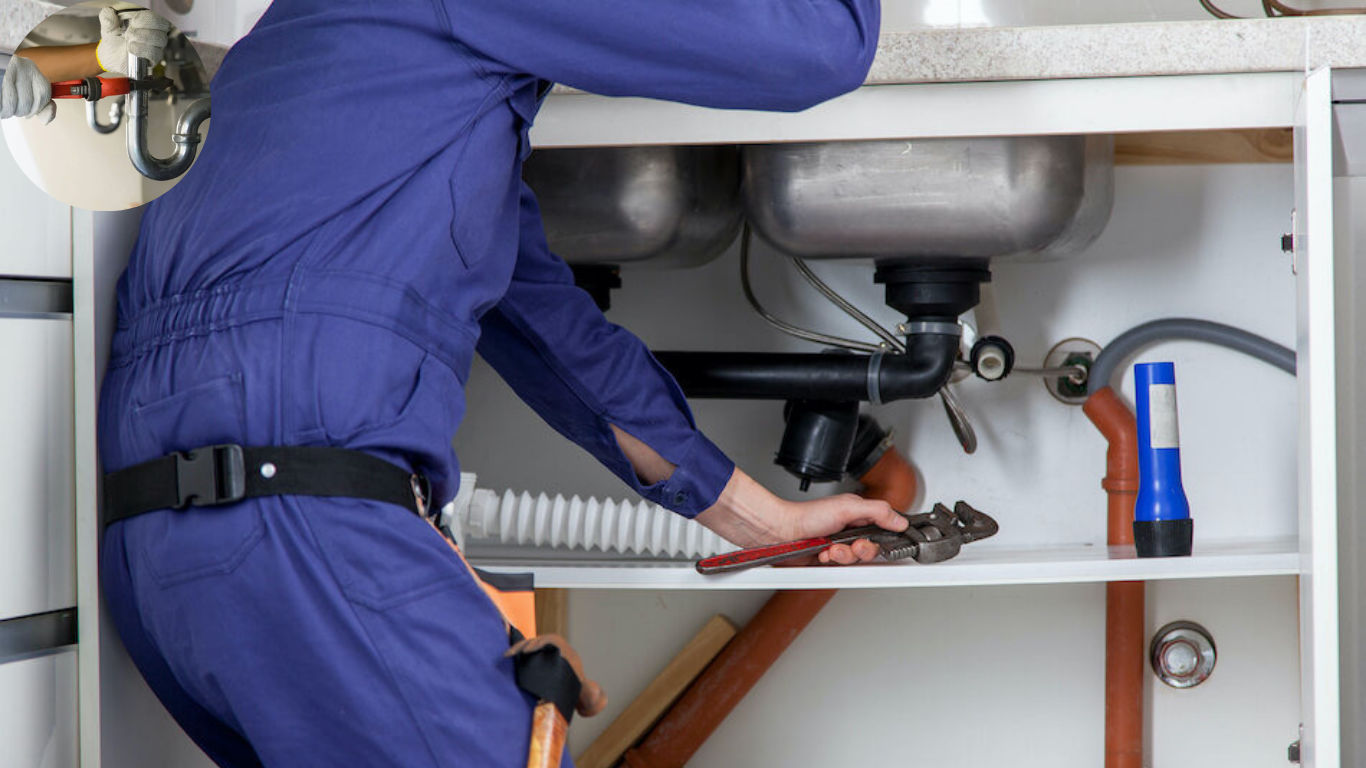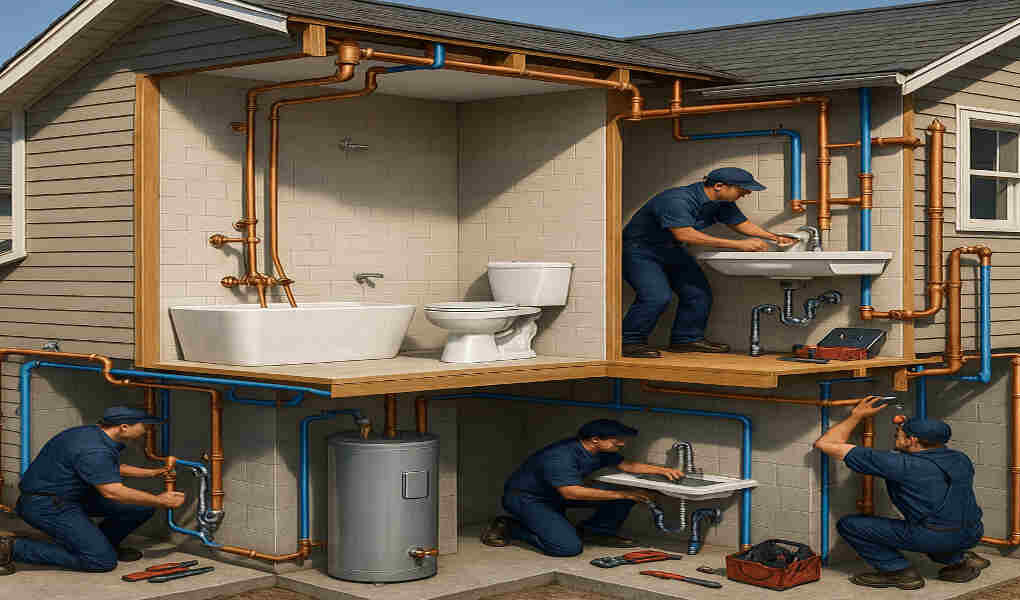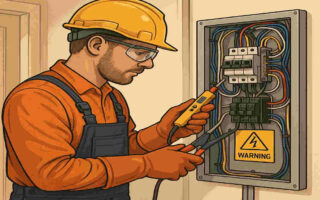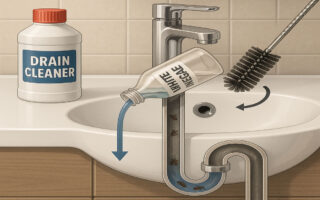Replacing the plumbing in your Home can be a significant undertaking. Whether you’re dealing with years-old pipes or a sudden leak that’s spiraling out of control, understanding the process, costs, and best practices is crucial. Many homeowners often ask, “How much to replace plumbing in a house?” The answer depends on various factors, including the scope of the work, materials, and labor involved.
Why Plumbing Replacement is Necessary
Plumbing systems are the unsung heroes of our homes, quietly working behind the scenes to deliver water and remove waste. However, over time, they can wear down, leading to leaks, corrosion, and decreased efficiency. Ignoring the signs of aging plumbing can result in costly repairs, water damage, and health hazards.
Before embarking on such a project, it’s vital to understand the cost implications and the factors that influence them.
Signs You Need to Replace Plumbing in Your Home
Understanding when it’s time to replace your plumbing can save you from expensive repairs and headaches in the future. Below are some common indicators:
Leaks and Water Damage
Frequent leaks are a clear sign of deteriorating pipes. While a one-off leak might be repairable, consistent issues often indicate more significant underlying problems.
Corrosion and Discolored Water
If your water appears rusty or has a metallic taste, it may indicate that your pipes are corroded. Corrosion weakens plumbing over time, leading to leaks and contamination.
Low Water Pressure
A sudden drop in water pressure could signal blockages or damaged pipes. If cleaning fixtures doesn’t solve the issue, it might be time to inspect your plumbing.
Age of Plumbing System
- Galvanized Steel Pipes: Last 20-50 years
- Copper Pipes: Last 50-70 years
- PVC Pipes: Last 25-40 years
If your Home’s plumbing is nearing the end of its lifespan, replacement is likely necessary.
Risks of Delaying Replacement
Ignoring these signs can lead to:
- Extensive water damage
- Mold growth
- Increased utility bills
- Health risks from contaminated water
Factors That Affect How Much to Replace Plumbing in a House
When asking, “How much to replace plumbing in a house?” it’s essential to consider the factors that influence pricing. Here’s a detailed breakdown:
You may also read (snake your toilet at home)
Type of Plumbing Service Required
- Simple Repairs: Fixing a single leak or replacing a small section of pipe is relatively inexpensive.
- Full System Replacement: Replacing all pipes in a house is more costly but often necessary for older homes or significant renovations.
Complex installations, like adding new bathrooms or upgrading to a tankless water heater, also increase costs.
Complexity of the Job
- Accessibility: Plumbing hidden behind walls, floors, or underground requires more labor and time, increasing costs.
- Outdated Systems: Homes with older materials, such as galvanized steel or cast iron, may require additional effort to remove and replace.
Materials Used
Material Average Lifespan Cost Per Linear Foot Pros Cons
Copper 50-70 years $2-$8 Durable, long-lasting Expensive, labor-intensive
PVC 25-40 years $0.50-$1.50 Affordable, lightweight, Less durable under extreme temperatures
PEX 40-50 years $1-$2 Flexible, easy to install Susceptible to UV damage
Choosing the right material is a balance between upfront cost and long-term durability.
Location and Accessibility
- Urban areas often have higher labor costs than rural locations.
- Excavation methods also play a role:
- Traditional Trenching: Requires digging up large areas, increasing costs.
- Trenchless Methods: Less invasive but may be more expensive initially.
Labor Costs and Expertise
Experienced plumbers charge higher rates, but their work is often more efficient and reliable. Rates vary by region, with urban areas typically costing more due to higher demand.
Additional Costs
- Building Work Fees: Restoring walls, floors, or landscaping after plumbing replacement is included in the total.
- Emergency Fees: Urgent repairs or after-hours work can significantly increase labor costs.
Average Cost Breakdown: How Much To Replace Plumbing in a House
Below is an overview of typical costs for plumbing replacement:
Cost by Home Size
- Small Home (1,000 sq. ft.): $4,000-$10,000
- Medium Home (1,500 sq. ft.): $8,000-$15,000
- Large Home (2,500 sq. ft.): $15,000-$25,000
Cost by Material
- Copper: $2,000-$15,000 depending on home size
- PVC: $1,500-$10,000
- PEX: $2,000-$12,000
Additional Expenses
- Excavation: $1,000-$5,000
- Permits: $50-$500, depending on local regulations
You may also read (what should i do if a raccoon is in my house)
Step-by-Step Process of Replacing Plumbing in a Home
Initial Inspection and Assessment
A licensed plumber will inspect your system to identify problem areas and recommend the best course of action.
Planning and Choosing Materials
Work with your plumber to select materials that fit your budget and meet your specific needs.
Obtaining Permits
Most municipalities require permits for plumbing work to ensure compliance with local building codes and regulations.
Removal of Old Plumbing
The old pipes are removed, often necessitating access to the wall or floor.
Installation of New Pipes
New pipes are installed using the chosen materials, ensuring proper connections and flow.
Testing and Inspection
The system is tested for leaks and inspected to ensure it meets safety standards.
Restoration
Walls, floors, or landscaping affected by the work are restored.
Tips to Save Money When Replacing Plumbing
- Get Multiple Quotes: Compare at least three licensed plumbers to find the best deal.
- Use Cost-Effective Materials: PEX and PVC are affordable and durable options.
- Schedule Non-Emergency Work: Avoid after-hours or weekend fees.
- Opt for Trenchless Technology: Reduce excavation costs while maintaining efficiency.
- Maintain Your Plumbing: Regular inspections and maintenance prevent costly replacements.
Common Mistakes to Avoid
- DIY Repairs: Without proper knowledge, you risk causing more damage.
- Ignoring Permits: Failing to obtain permits can result in fines and unsafe installations.
- Choosing Cheap Materials: Low-quality pipes may fail sooner, resulting in higher costs in the long run.
- Delaying Replacement: Postponing necessary work can result in higher repair costs later.
When to Call a Professional Plumber
Hiring a licensed plumber ensures the work is done safely and correctly. Look for professionals with:
- Proper licensing and insurance
- Positive reviews and references
- Transparent pricing and warranties
Unqualified work can lead to leaks, water damage, and costly repairs down the line.
You may also read (snake the plumbing).




